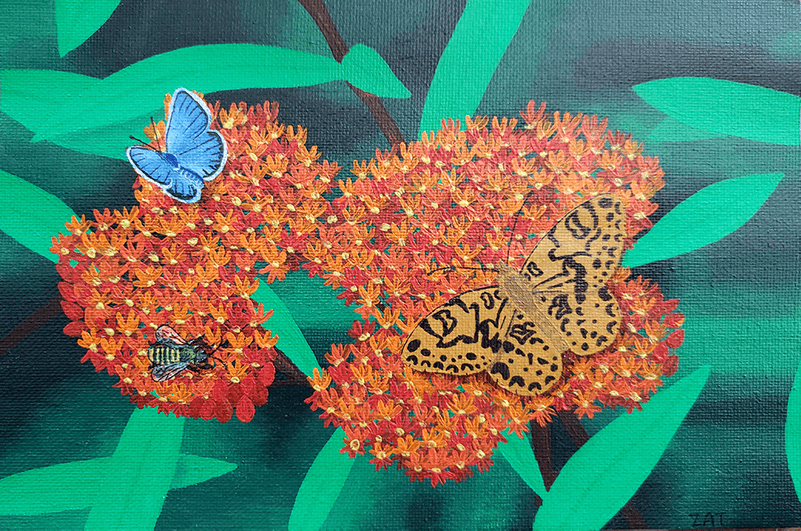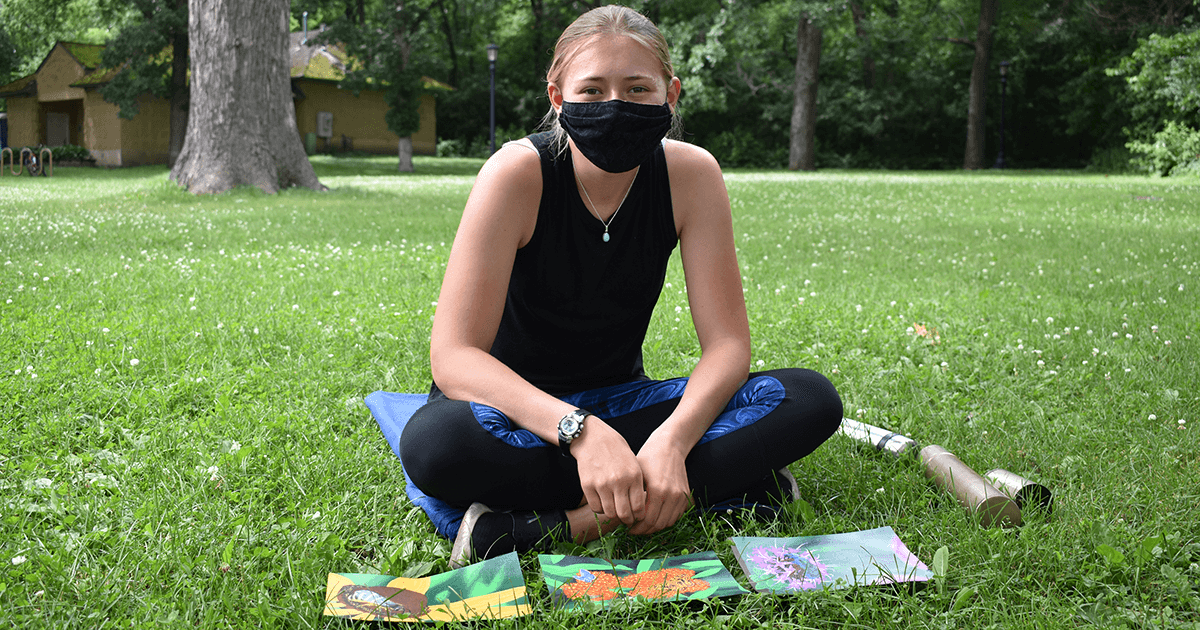Pollinators and native plants, illustrated
This is a guest blog post from Zosh, a Youth Empowerment Program (now the Environmental Stewardship Institute) participant this summer. Zosh used her scientific illustration skills to celebrate pollinators and native plants. If her paintings inspire you, here's how you can volunteer with us at a habitat restoration or landscape for pollinators and the river.
* * * * *
I was inspired to do these acrylic paintings because they combine my love for nature and art into one project. I’ve always enjoyed camping, hiking, and kayaking in natural areas, especially when I can learn something new about those ecosystems. I also love insects and find them fascinating.
Art has always been a part of my life in some form or another, but I started painting at an art class called Studio 7. Many of the techniques that I used in the pollinator paintings came from lessons with Studio 7.
The ligated furrow bee (Halictus ligatus) on black-eyed Susan (Rudbeckia hirta)

Black-eyed Susan has a sweet nectar that attracts many species of pollinators. This painting was inspired by a photo taken by Chris Heltzer, a nature photographer from Nebraska.
The northern blue butterfly (Plebejus idas), regal fritillary (Speyeria idalia) and a plasterer bee (Colletes inaequalis) on butterfly weed (Asclepias tuberosa)

Butterfly weed is one of the larval host plants for monarch butterflies, but many other pollinators also enjoy visiting the flowers.
The silky striped sweat bee (Agapostemon sericeus) on rough blazing star (Liatris aspera)

The silky striped sweat bee is found all across the U.S. and into Canada. It isn’t picky about the flowers that it travels to; it’s more of an opportunistic pollinator.
* * * * *
What's the Youth Empowerment Program?
FMR created the Youth Empowerment Program (now the Environmental Stewardship Institute) to address the gap between environmental education and a career path in the environmental field.
While many high schools offer green teams or eco clubs, young people often don't have many chances to explore what a real career in the environmental field would look like. As an environmental organization, we wanted to use our resources to help address that gap, in turn growing a stronger, more equitable movement.
We provide paid job experience and foundational learning to a group of students curious about environmental career paths. Our hope is that, by completing the program, participants are more prepared for continued schooling in environmental subjects and have real work experience to lean on for future job opportunities in the field.
